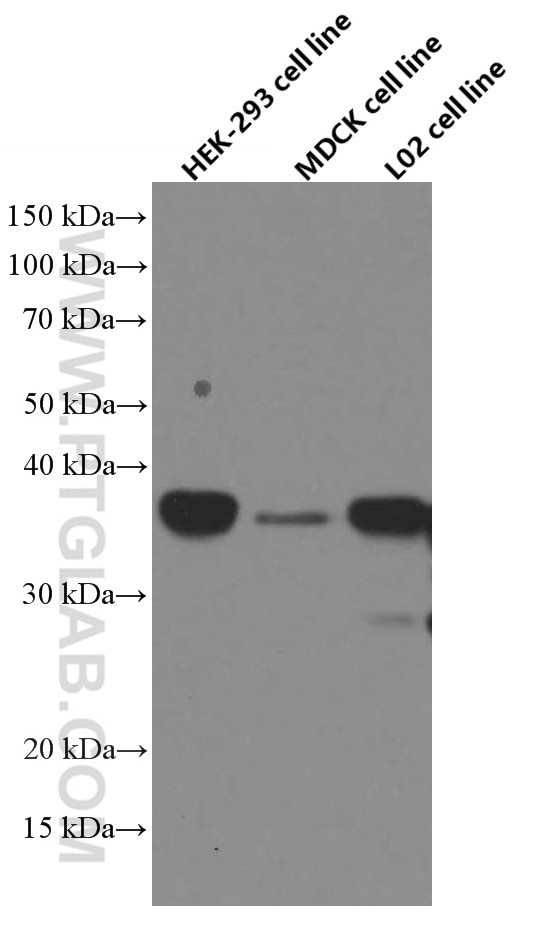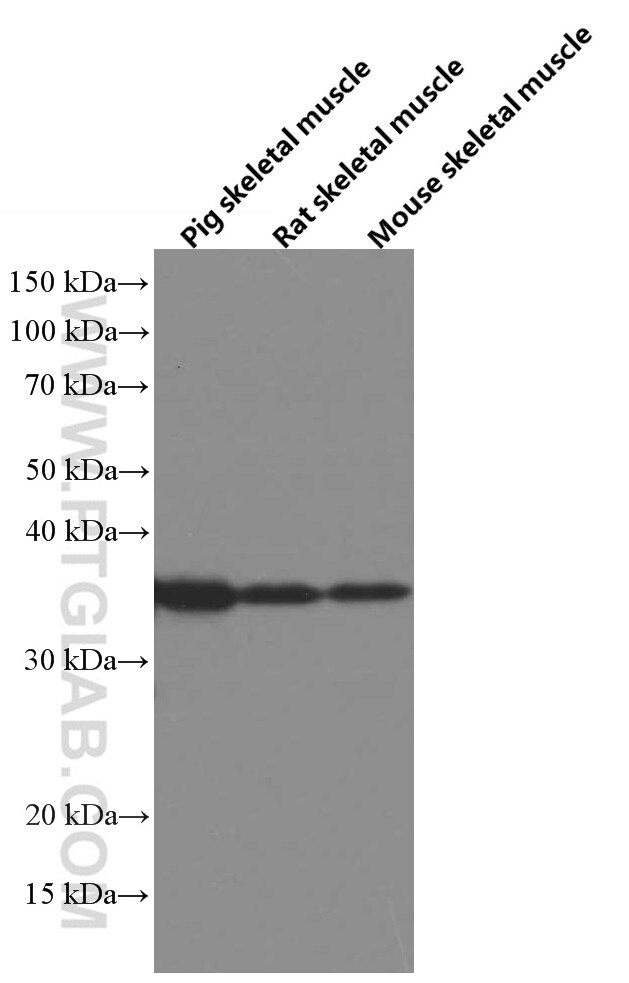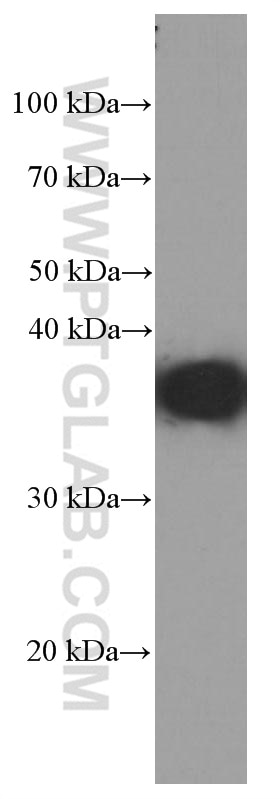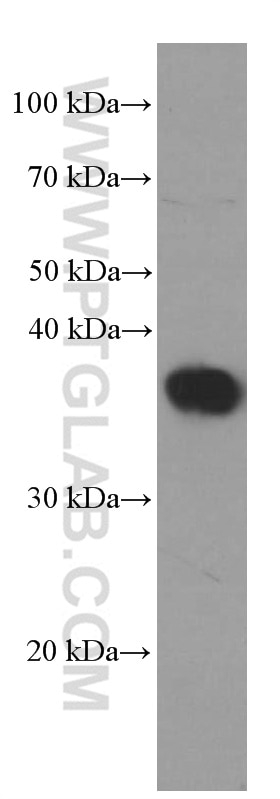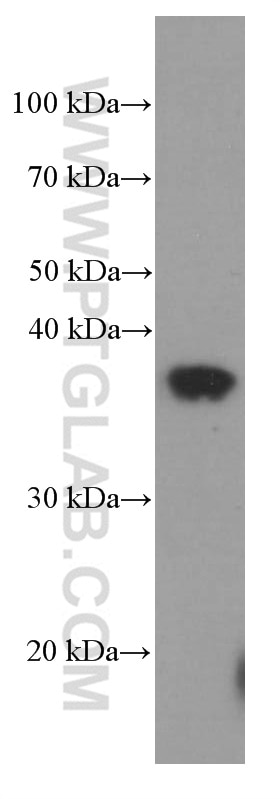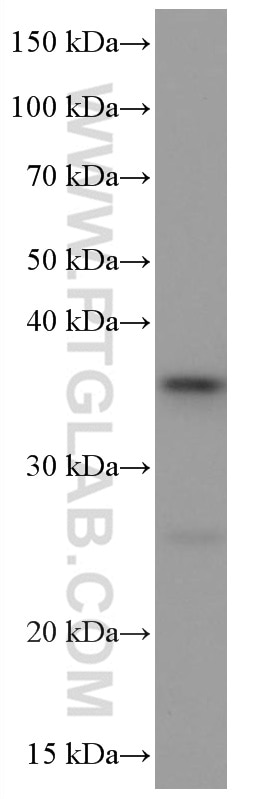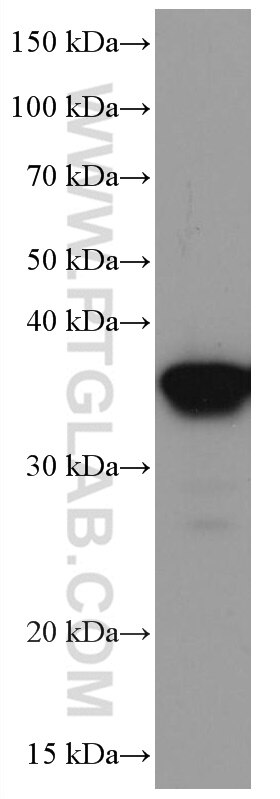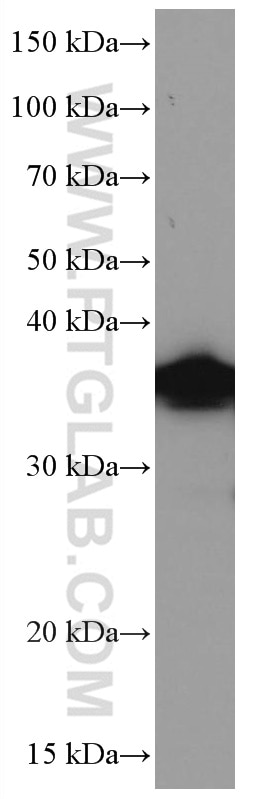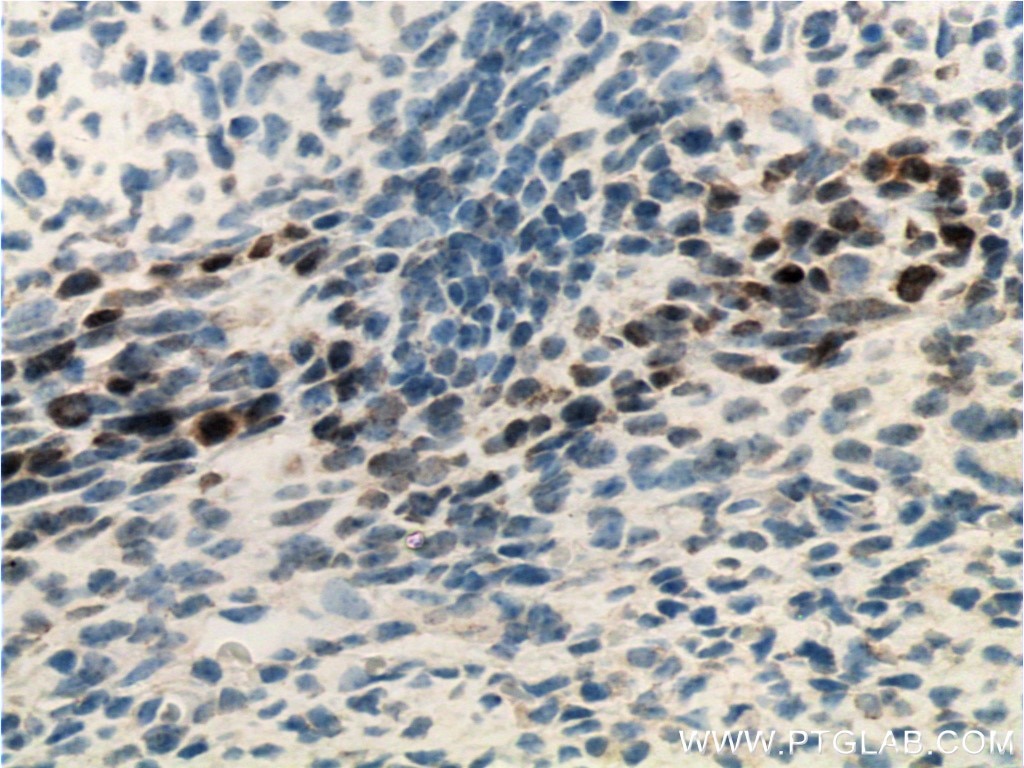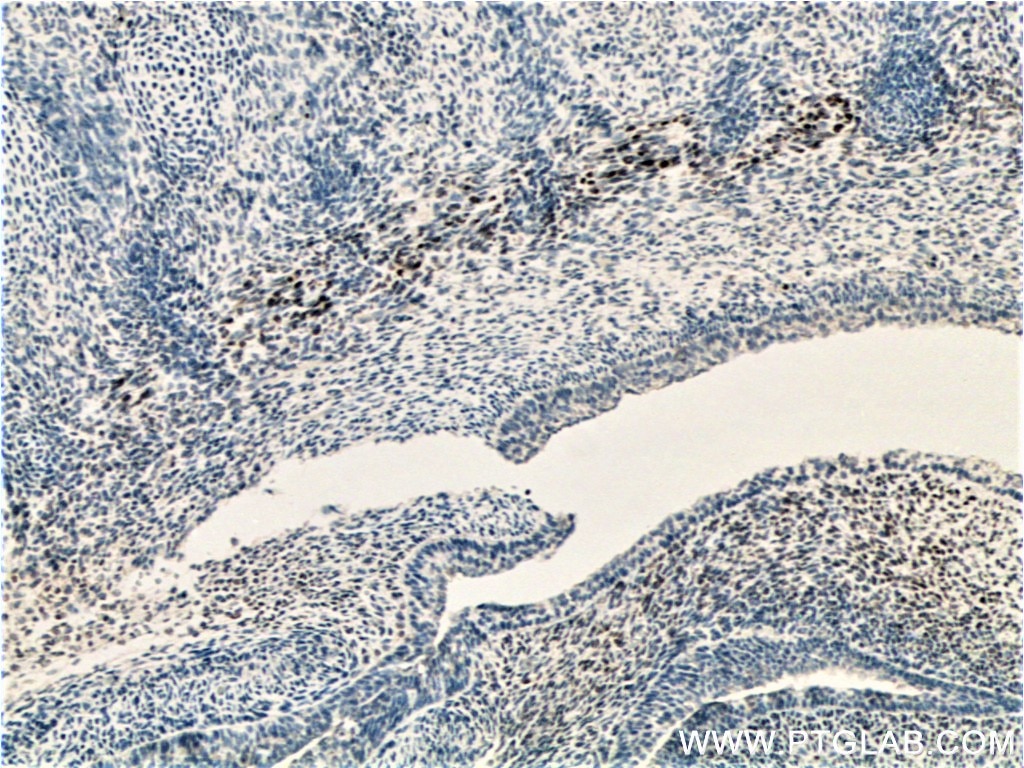SIX2 Monoklonaler Antikörper
SIX2 Monoklonal Antikörper für IHC, WB, ELISA
Wirt / Isotyp
Maus / IgG2b
Getestete Reaktivität
Hausschwein, human, Hund, Maus, Ratte
Anwendung
WB, IHC, IF, ELISA
Konjugation
Unkonjugiert
CloneNo.
1F9G11
Kat-Nr. : 66347-1-Ig
Synonyme
Galerie der Validierungsdaten
Geprüfte Anwendungen
| Erfolgreiche Detektion in WB | Hausschwein-Skelettmuskelgewebe, HEK-293-Zellen, L02-Zellen, Maus-Skelettmuskelgewebe, MDCK-Zellen, NCCIT-Zellen, Ratten-Skelettmuskelgewebe |
| Erfolgreiche Detektion in IHC | Mausembryogewebe Hinweis: Antigendemaskierung mit TE-Puffer pH 9,0 empfohlen. (*) Wahlweise kann die Antigendemaskierung auch mit Citratpuffer pH 6,0 erfolgen. |
Empfohlene Verdünnung
| Anwendung | Verdünnung |
|---|---|
| Western Blot (WB) | WB : 1:1000-1:6000 |
| Immunhistochemie (IHC) | IHC : 1:50-1:500 |
| It is recommended that this reagent should be titrated in each testing system to obtain optimal results. | |
| Sample-dependent, check data in validation data gallery | |
Veröffentlichte Anwendungen
| WB | See 1 publications below |
| IHC | See 3 publications below |
| IF | See 3 publications below |
Produktinformation
66347-1-Ig bindet in WB, IHC, IF, ELISA SIX2 und zeigt Reaktivität mit Hausschwein, human, Hund, Maus, Ratten
| Getestete Reaktivität | Hausschwein, human, Hund, Maus, Ratte |
| In Publikationen genannte Reaktivität | Maus |
| Wirt / Isotyp | Maus / IgG2b |
| Klonalität | Monoklonal |
| Typ | Antikörper |
| Immunogen | SIX2 fusion protein Ag2124 |
| Vollständiger Name | SIX homeobox 2 |
| Berechnetes Molekulargewicht | 291 aa, 32 kDa |
| Beobachtetes Molekulargewicht | 37 kDa |
| GenBank-Zugangsnummer | BC024033 |
| Gene symbol | SIX2 |
| Gene ID (NCBI) | 10736 |
| Konjugation | Unkonjugiert |
| Form | Liquid |
| Reinigungsmethode | Protein-A-Reinigung |
| Lagerungspuffer | PBS mit 0.02% Natriumazid und 50% Glycerin pH 7.3. |
| Lagerungsbedingungen | Bei -20°C lagern. Nach dem Versand ein Jahr lang stabil Aliquotieren ist bei -20oC Lagerung nicht notwendig. 20ul Größen enthalten 0,1% BSA. |
Hintergrundinformationen
The SIX proteins (sine oculis) are a family of homeodomain transcription factors that share a conserved DNA binding domain. Six members (Six1-Six6) of the Six gene family have been identified in mice and humans. SIX2, containing one homeobox DNA-binding domain, is highly expressed in fetal tissues but expression is limited in adult tissues. SIX2 may be involved in limb tendon and ligament development[PMID:21420949]. It has been previously shown that SIX2 is expressed in developing mesenchymal tissue including head and urogenital system at the time of overt midfacial and renal differentiation[PMID: 22282599].
Protokolle
| Produktspezifische Protokolle | |
|---|---|
| WB protocol for SIX2 antibody 66347-1-Ig | Protokoll herunterladen |
| IHC protocol for SIX2 antibody 66347-1-Ig | Protokoll herunterladen |
| Standard-Protokolle | |
|---|---|
| Klicken Sie hier, um unsere Standardprotokolle anzuzeigen |
Publikationen
| Species | Application | Title |
|---|---|---|
Biochem Biophys Res Commun Disruption of Gen1 causes ectopic budding and kidney hypoplasia in mice | ||
Dev Biol Cross-platform single cell analysis of kidney development shows stromal cells express Gdnf. | ||
Dev Dyn Glypican-6 and Glypican-4 stimulate embryonic stomach growth by regulating Hedgehog and non-canonical Wnt signaling | ||
Nucleic Acids Res The transcriptional coactivator Eya1 exerts transcriptional repressive activity by interacting with REST corepressors and REST-binding sequences to maintain nephron progenitor identity | ||
J Am Soc Nephrol Chromatin Remodelers Interact with Eya1 and Six2 to Target Enhancers to Control Nephron Progenitor Cell Maintenance |
